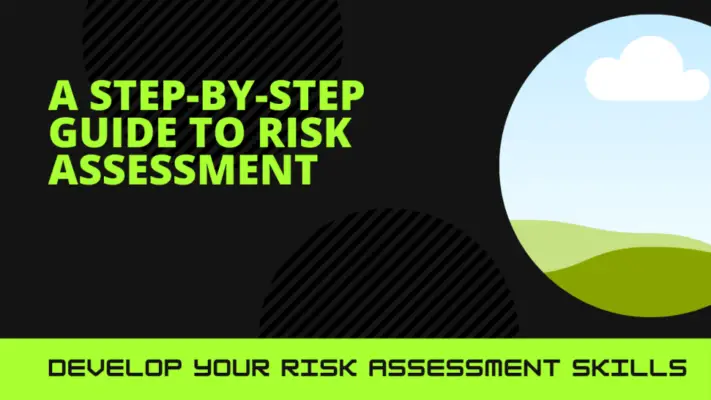Risk assessment is a fundamental process in the risk management process and is used in various fields, including criminal justice, healthcare, and finance. It systematically evaluates potential risks and their associated impacts to inform decision-making and mitigate adverse outcomes.
This article aims to provide an analytical and detailed understanding of risk assessment.
The process of conducting a risk assessment can be broken down into four key steps, often called the ‘Four Cs’: collecting information, calculating scores, classifying individuals, and customizing the response.
First, information collection involves gathering relevant data about the context or scenario.
Then, these data are analyzed using established methodologies to calculate risk scores that quantify the likelihood and severity of potential risks.
Next, based on these scores, individuals are classified into different risk categories.
Finally, the justice system response or any necessary actions are customized according to the identified risks.
It is a process that helps in making informed decisions by objectively evaluating potential risks through methodical steps of risk management. The systematic approach enables proactive measures to reduce adverse consequences through a reduction in risk ratings.

Conducting Risk Assessment (“Four Cs”)
This focuses on risk assessment, which systematically understands and evaluates potential risks, especially operational risks and safety risks.
One key aspect is using a risk assessment matrix, which helps to organize and prioritize risks based on their likelihood and impact.
The ultimate goal of conducting risk assessments is to effectively manage and mitigate potential risks to ensure the success and safety of a project or organization.
Understanding Risk Assessment
Understanding risk assessment involves analyzing potential hazards and evaluating the likelihood and severity of their impact to make informed decisions about mitigation strategies.
The risk assessment process begins with hazard identification, where potential hazards are identified and categorized based on their nature and characteristics.
Once the hazards or relevant risk has been identified, the next step is to assess the potential risks associated with each hazard. This involves determining the level of risk by considering factors such as the probability of occurrence and the potential consequences.
Organizations often use a risk assessment form to facilitate this evaluation that helps systematically assess each hazard and document the findings.
Organizations can effectively prioritize their resources by understanding risk assessments to mitigate potential risks and minimize their impact on operations and stakeholders.
How to use a risk assessment matrix
To effectively utilize a risk assessment matrix, one must employ a systematic approach that categorizes hazards based on their likelihood and severity of impact.
The risk manager does risk evaluation on the exposure of workers or risks to workers of either engineering controls. potential incident and adverse effects of non-routine activities.
The risk assessment matrix is a visual tool that allows for the identification and evaluation of potential risks in a structured manner. It helps to prioritize risks by assigning them specific risk ratings, which are determined by combining the likelihood and severity scores.
This quantitative analysis clearly explains which risks pose the highest threat and require immediate attention. Once risks have been assessed and rated, appropriate control measures can be implemented to mitigate or eliminate them.
Organizations can implement protective measures such as safety protocols, training, or equipment upgrades. A risk assessment matrix can be used to make informed decisions about resource allocation to mitigate potential hazards and improve safety.
The goal of risk assessments
The primary objective of conducting a comprehensive risk assessment is to ensure the well-being and security of individuals and assets, instilling a sense of confidence and peace of mind within the organization.
Risk assessments are essential in identifying potential risk factors and hazards that could impact an organization’s operations. Organizations can reduce potential risks by implementing control measures through risk management processes.
Risk assessment matrices are often employed to evaluate and prioritize risks based on their likelihood and severity. This enables organizations to allocate resources effectively toward managing high-priority risks.
Through rigorous risk analysis measures, organizations can identify workplace risks and develop strategies to minimize or eliminate them.
Overall, risk assessment plays a crucial role in safeguarding the organization’s interests while ensuring the safety of its people and assets.
Step 1) Collecting Information
Collecting information is the initial step in conducting a risk assessment. This crucial stage involves gathering relevant data and facts about the assessed risks. Collecting information is to understand the risks involved, including operational and safety risks.
Risk assessors must meticulously analyze available information from multiple sources, such as historical records, incident reports, industry standards, and expert opinions. Additionally, effective risk communication plays a significant role during this phase as it allows for the exchange of vital information among stakeholders involved in the process.
By carefully collecting and analyzing pertinent data, risk assessors can establish a solid foundation for subsequent stages of the assessment process to identify and evaluate potential risks effectively.

Step 2) Calculating Scores
Once the relevant data has been collected and analyzed, the next step in the risk assessment process involves determining scores based on established criteria.
This step, also known as quantitative risk analysis or calculating scores, allows for a methodical evaluation of worker risks. The aim is to assign numerical values representing the risk level associated with each hazard identified during data collection.
Calculating scores involves considering factors such as the likelihood and severity of potential harm to workers and their exposure to hazards. Organizations can prioritize risks and allocate resources by assigning numeric values to these factors.
This analytical approach enables a systematic identification and quantification of risks, ensuring that actions are taken to minimize worker exposure and improve overall safety.
Step 3) Classifying Individuals
Step 3 involves categorizing individuals based on specific criteria to analyze further their vulnerability and potential impact on the identified hazards. This step is crucial in determining the level of risk that each individual may face and helps prioritize preventive measures.
The classification process considers various factors such as harm to people, worker representatives, and a competent person who can assess risks effectively. It also takes into account nonroutine activities that may pose additional risks.
Incident reports play a significant role in identifying patterns or trends related to workplace hazards and help inform the risk assessment plan.
Organizations can allocate resources appropriately by classifying individuals, implementing control measures tailored to specific groups, and ensuring workers’ safety and well-being within their respective roles.
Step 4) Customizing Justice System Response
Customizing the justice system’s response involves tailoring interventions and penalties based on individual circumstances and needs, ensuring a fair and just outcome for all parties involved.
In Step 4 of risk assessment, the justice system considers limited resources and utilizes them efficiently to address the needs of different individuals. This step recognizes that the justice system operates in an environment where resources are scarce, necessitating prioritization and allocation according to risk levels.
By customizing its response, the justice system aims to avoid unnecessary incarceration or punitive measures for low-risk individuals while providing appropriate support and supervision for those at higher risk. However, it is important to critically analyze whether this customization results in equitable outcomes across racial groups within the justice system.
Studies have shown that black people often face disproportionate penalties due to biases inherent in risk assessments, highlighting a need for ongoing evaluation and improvement.
Frequently Asked Questions
How long does it typically take to conduct a risk assessment?
The duration of a risk assessment can vary depending on factors such as the size and complexity of the project, availability of resources, and level of expertise. It typically ranges from a few days to several weeks.
What are the potential limitations or biases of risk assessment tools?
Potential limitations or biases of risk assessment tools include subjective judgment, reliance on historical data, limited scope, lack of consideration for emerging risks, and potential for human error in interpreting and analyzing data.
Are there any legal requirements or regulations regarding using risk assessments in the justice system?
Legal requirements and regulations regarding using risk assessments in the justice system vary across jurisdictions. These may include guidelines on the types of risk assessment tools that can be used, training requirements for individuals administering the assessments, and protocols for interpreting and utilizing the results.
How do risk assessment scores impact decision-making in the justice system?
Risk assessment scores impact decision-making in the justice system by providing objective data to inform judgments about a defendant’s likelihood of reoffending or risk to public safety. These scores can influence bail determinations, sentencing recommendations, and parole decisions.
Can risk assessments accurately predict future criminal behavior?
Risk assessments have limitations in accurately predicting future criminal behavior. They rely on historical data, which may not capture all relevant factors and fail to account for individual circumstances and potential changes over time.

Conclusion
Risk assessment is a systematic process used to evaluate potential risks and determine the appropriate response within the justice system.
The process consists of four key steps:
1. Collecting information: relevant data is gathered to assess the risk level.
2. Calculating scores: scores are assigned based on predetermined criteria.
3. Classifying individuals: individuals are categorized into different risk levels.
4. Customizing the response: a tailored response is developed to address the identified risks.
This methodical approach ensures an objective and evidence-based decision-making process in managing risks within the justice system.

Chris Ekai is a Risk Management expert with over 10 years of experience in the field. He has a Master’s(MSc) degree in Risk Management from University of Portsmouth and is a CPA and Finance professional. He currently works as a Content Manager at Risk Publishing, writing about Enterprise Risk Management, Business Continuity Management and Project Management.

